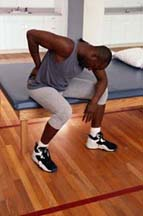Study Shows Chiropractic Better Than Muscle Relaxants for Low Back Pain
A study published in the July / August 2004 peer-reviewed scientific journal, "Journal of Manipulative and Physiological Therapeutics", compared the effects of chiropractic adjustments to muscle relaxants in a group of patients with subacute low back pain. 
This study defined subacute low back pain as lower back pain (LBP) with a duration of 2 to 12 weeks. The study noted that in the United States the incidence of low back pain is as high as 75% to 85% of the population being affected at some time in their lives. On a yearly basis, the study noted that between 15% to 20% of the adult population can expect to experience LBP in any given year.
In the study, conducted at Life University in Georgia, 192 subjects with LBP from 2 to 6 weeks were separated into three groups. One group received Chiropractic adjustments with placebo medication. The second group received muscle relaxants with sham (fake) adjustments. The third group was a control group and received both placebo medication as well as the sham (fake) adjustments. Care was rendered to the group for a 4 week period with evaluations being done at the 2 week and 4 week marks.
Results were measured in terms of patient reported pain, severity, disability and depression, as well as measured flexibility and the patients self usage of over the counter acetaminophen (Tylenol). The results of this short study showed that for the two primary indicators of pain and severity, the chiropractic group did better than the other two groups. No significant differences were seen for disability, depression, flexibility, or acetaminophen usage across groups in a study of this short a period of time. All three groups showed improvement in the areas of depression, disability and drug usage.
The authors of the study did note that a longer study could have yielded more differences in recovery. However, in the area of pain, a primary patient concern in subacute LBP cases, the group that received the chiropractic adjustments faired the best. Their comments were: "Statistically, the chiropractic group responded significantly better than the control group with respect to a decrease in pain scores."